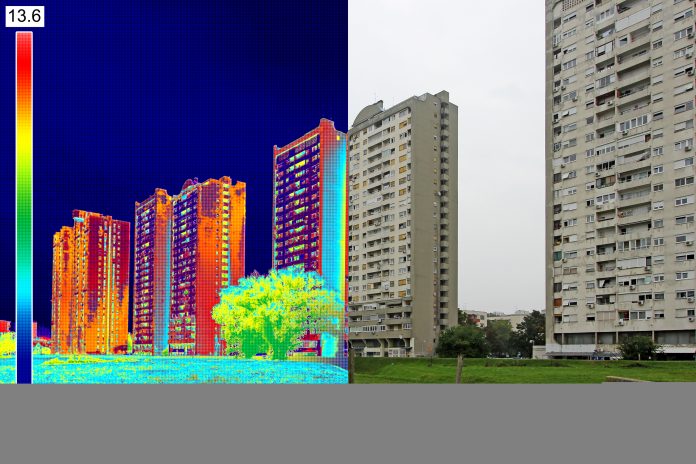BIM Academy managing director Peter Barker looks at how digital can contribute to a net-zero built environment, identifying several initiatives which could help build a more sustainable future
As we prepare our buildings and infrastructure to respond and adapt for the coronavirus recovery, with both caution and optimism, we need to consider the short-term and long-term impact. The silver lining of this crisis is that we can turn the unwelcomed hiatus to our advantage, to reflect and plan a smarter future for our built assets and the people who use and occupy them.
The pandemic has brought into focus the pressing need to accelerate action in preventing further destruction to our environment. The opportunities lie in improving our understanding of how buildings should and will perform – we can achieve this by better utilisation of the digital tools which have matured rapidly since the millennium and are now becoming mainstream in the industry.
Closing the performance gap
To be effective in combating climate change, it is essential we firstly look at ways of closing the performance gap. By this I mean the gulf between how we expect a building to perform when we are designing it and how it turns out – its actual performance.
Too many buildings fail in use and it is not all down to poor workmanship and materials. Uninformed or false assumptions on environmental performance are often due to a lack of regular and rigorous analysis at design stage.
There is often a reliance on slow and unwieldy processes leading to a “we’ll test it after we’ve finished designing it” mentality. Infrequent testing of alternative design scenarios during the early design stage often result in inaccuracies, false expectations and unplanned outcomes. We can no longer go on like this if we are to address the climate emergency.
Thankfully, we are seeing increased improvement in the interaction between digital design and environmental analysis tools, and this is giving us a greater ability to test and retest at an early stage. At BIM Academy, we have been working on developments to improve this interaction between the commonly used digital authoring software and environmental analytical tools, which is giving greater insights to designers and clients at concept design stage.
The importance of retrofit
It is estimated that 80% of the buildings we will have in 2050 already exist today and the publication of PAS 2035 last year gave further momentum to this often overlooked aspect. There needs to be an increased focus on retrofit to maximise the value and performance of our existing housing stock.
To reuse buildings effectively and maximise their potential, we need a better understanding at what makes them tick, and digital tools such as LiDAR and photogrammetry, cold bridge analysis and thermal imaging digital tools are all increasingly playing a part in diagnostics and remediation.
The pandemic has also coincided with, and may have accelerated, our awareness of the importance of our analysis and improvement of wellbeing of our buildings’ users and how this corresponds to the performance of the building’s environment, its fabric and systems.
We are getting better at tracking environmental performance in use but what about the relationship between occupant wellbeing and internal environmental quality (IEQ)? We are currently carrying out research into developing solutions that involve the use of smart sensors to correlate and analyse the relationship between the two and create actionable advice on improving the environment for building users and owners.
Greater understanding of building occupiers and uses in this way will also provide valuable information when upgrading old buildings to improve not only their performance but also making them better places to live, work and educate.
Operational and embodied carbon
Reducing operational carbon and embodied carbon emissions attributable in buildings and infrastructure are also essential components of a net-zero carbon strategy for new build and retrofit.
Embodied carbon, largely attributable to a building’s procurement and its material content, has sometimes in the past been seen as a lower priority. However, we are now increasingly seeing digital processes being used to capture essential data on embodied carbon properties within object and material libraries which, when incorporated or linked to the digital design model, can be used to easily quantify and more rapidly assess the embodied carbon impact of alternative options for the emerging design.
Embodied carbon is also associated with onsite operations during construction. Utilisation rates of site plant and equipment are sometimes as low as 30%, with a crossover of equipment requirements between work packages causing three to five times more equipment duplication or redundancy. BIM Academy is working on further research projects that combine 4D BIM technologies with IoT to achieve greater onsite efficiencies for large complex construction projects to improve the utilisation of site plant and equipment by 15% and consequent positive impact on embodied carbon emissions.
In government and in the private sector, there is now increasing recognition of the potential for digital to provide a unified, continuous information thread from design to manufacture to operation. This is hugely important as it creates the mechanism for a deeper understanding of how buildings should and will perform. It also extends our knowledge, which often stops at building handover, into a far better evaluation of performance and user wellbeing during actual use.
Digital technology, and the appropriate use and interpretation of data, have a fundamental role to play in helping the UK hit its net-zero goals. The amount of work required over the next 30 years to achieve this may be daunting, but it is achievable with increased realisation and understanding of the technological capabilities at our disposal and courage and ambition to apply them.
 Peter Barker
Peter Barker
Managing director
+44 (0)191 269 5444
Twitter: bimacademy
LinkedIn: BIM Academy

















